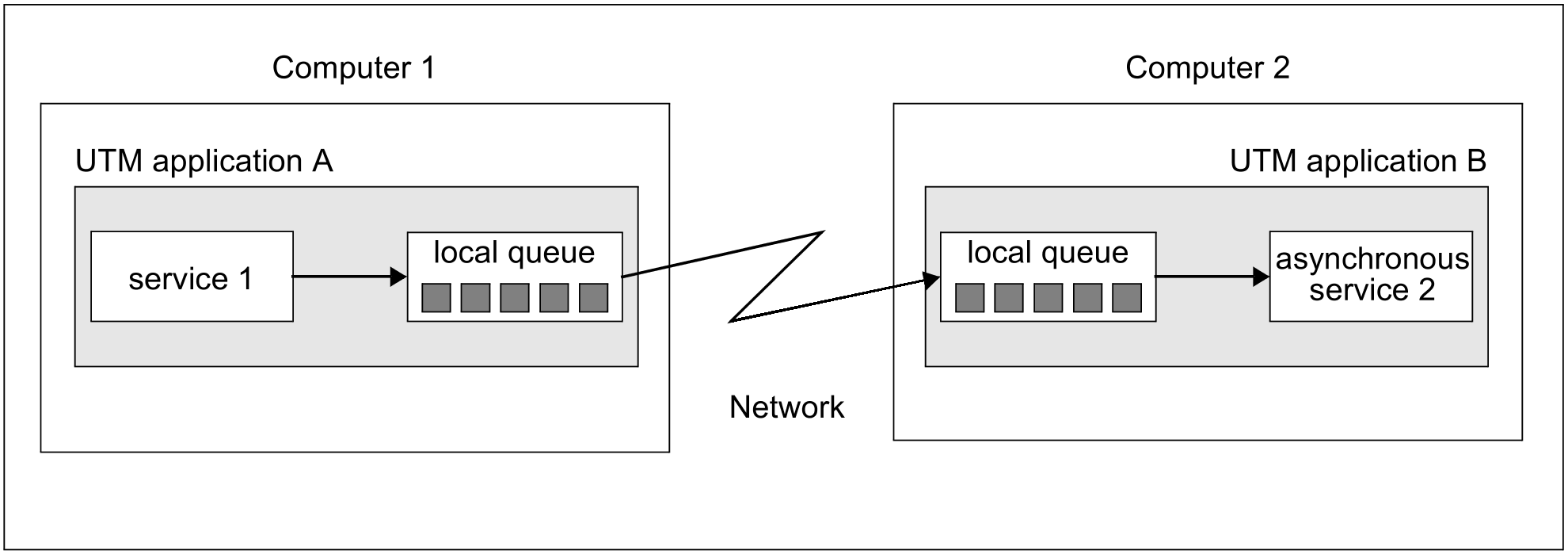A job-submitting service can use the FPUT or DPUT call to send an asynchronous job to a remote asynchronous service (Remote Queuing). The job-submitting service may either be a dialog or an asynchronous service.
openUTM uses two local queues for asynchronous jobs to a remote applications: one queue is located in the sending application, the other in the receiver. This deferred delivery principle makes sure that distributed message queuing under openUTM is entirely independent of whether or not a connection is currently established. If no connection can be established, the job remains in the local send queue until the connection is established. The following applies once the connection has been established.
With LU6.1, the jobs are transmitted to the partner immediately.
With OSI TP, it may be some time before the jobs are transmitted. This time is limited by the value generated in MAX CONRTIME. Note that the time is set to 10 minutes if CONRTIME=0.
If a serious error occurs while transmitting a job, i.e. while the connection is open, then the job is deleted from the local send queue but is not entered in the corresponding message queue of the partner application. In this case, a K239 message is output in the local application.
A serious error that results in the loss of the job may occur, for example, if the job is sent to a TAC which is locked in the partner application. The exact cause can be identified from the K086 (LU6.1) or K119 (OSI TP) message which is output in the partner application:
Loss of a job can be prevented by activating saving of messages in the local dead letter queue in the local application for the LPAP or OSI-LPAP partner, see section "Dead Letter Queue".
Figure: Remote queuing with openUTM

